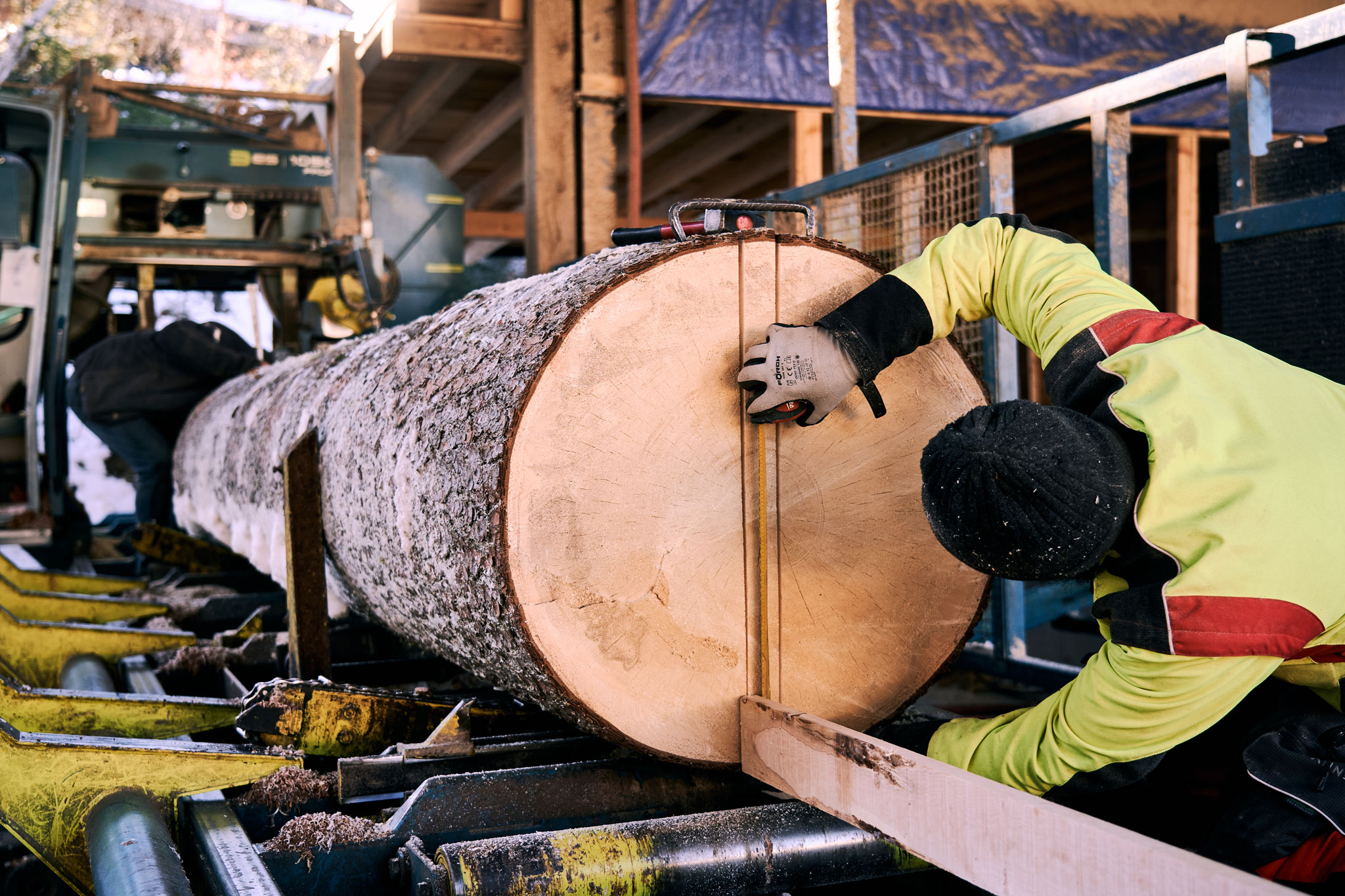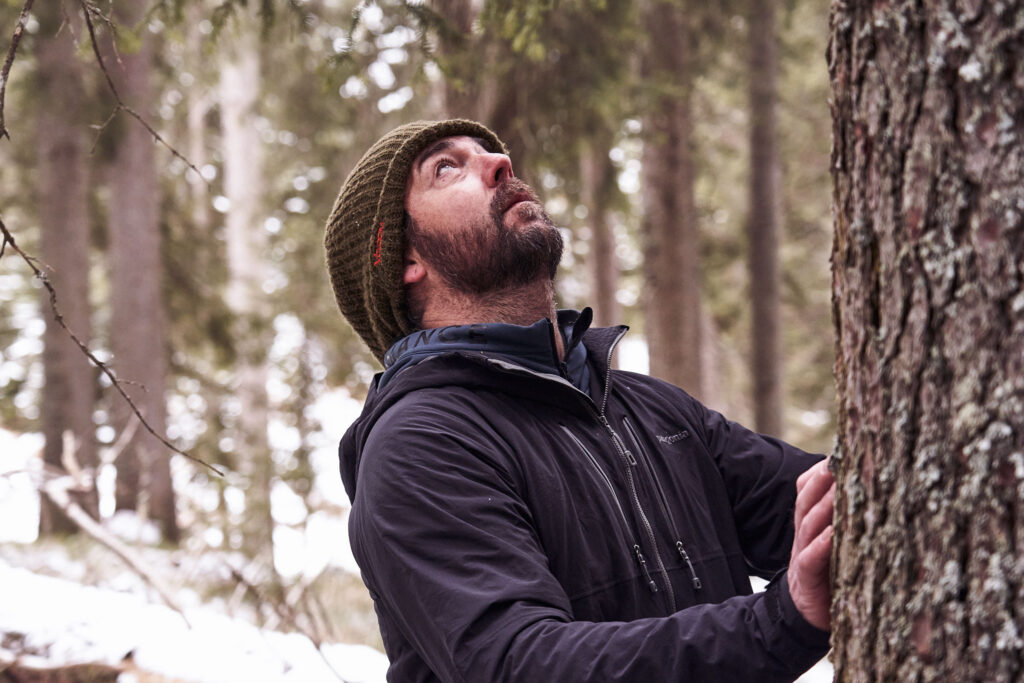The first view of the freshly exposed surface reveals the tree’s hidden structure, its grain and patterns, showing what the trunk has kept hidden for centuries. Even though the wood will only find its place in the instruments after years of seasoning, it already begins to demonstrate the potential it holds for becoming future guitars.




